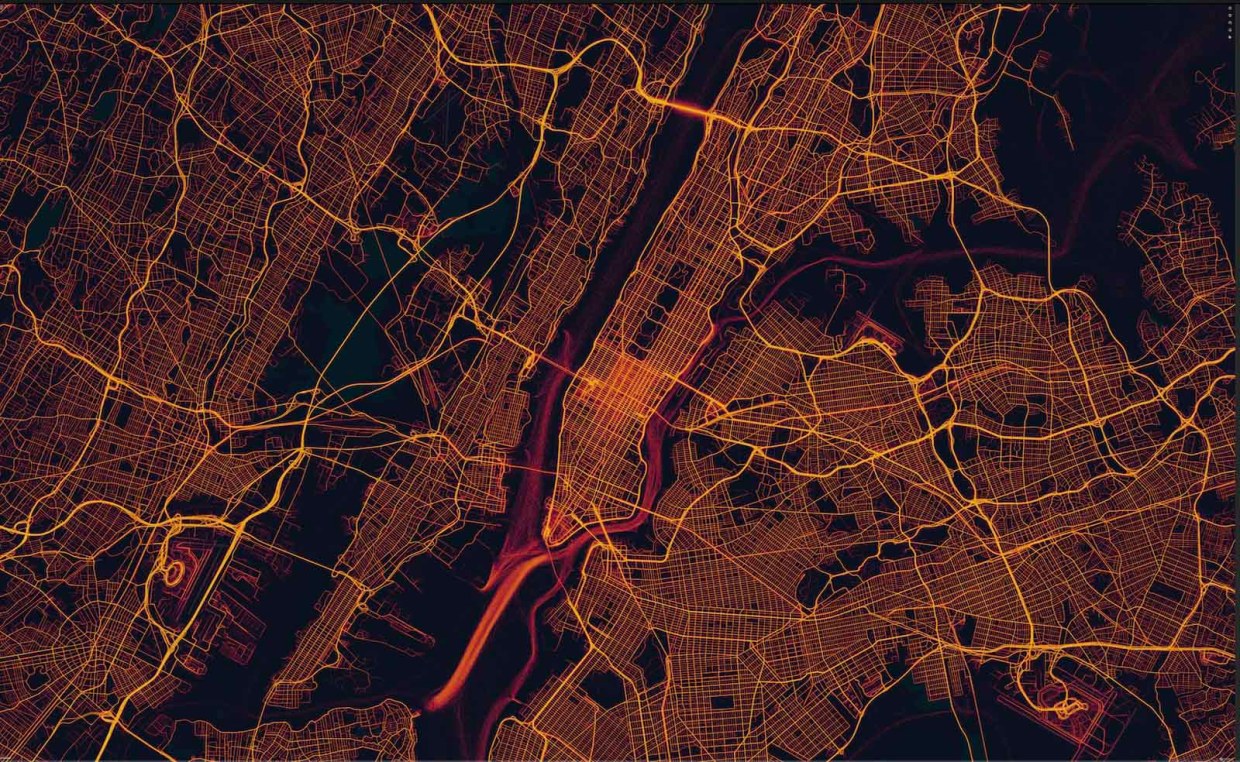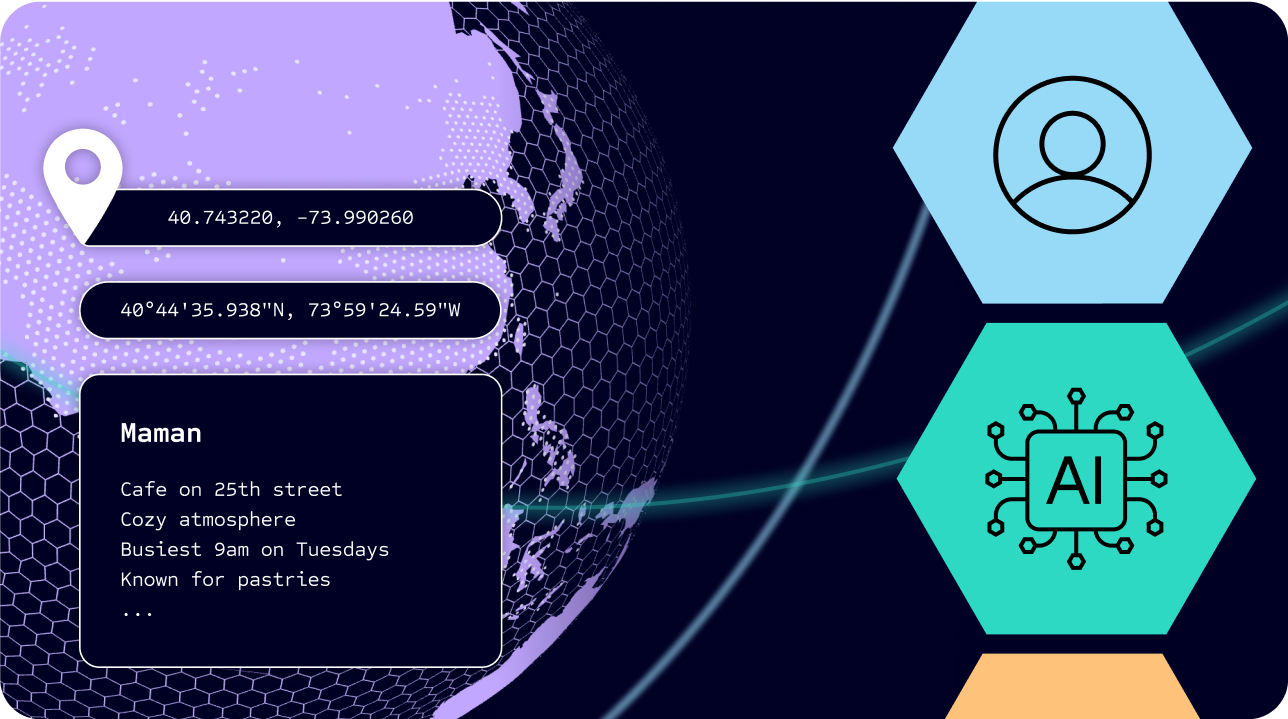Foursquare’s Senior Director of Engineering Shan He was recently featured on the Mapscaping Podcast to discuss all things Hex Tiles. Let’s recap what she had to say about this unique technology and how it’s improving the geospatial analysis and visualization process.
Geospatial analysis can be challenging and time-consuming – from preparing data of different shapes, forms, sizes, to processing complex datasets at scale. As the leading location technology platform, Foursquare is in the business of deeply understanding movement and places. Our tech stack helps businesses use location to make more informed decisions and ultimately drive success. An excellent example of this is Hex Tiles, a next-generation tiling system on Foursquare’s Unfolded platform that offers significant advantages for performing large-scale geospatial data visualization and analytics.
We tile data because the world is messy. The existence of maps abstracts the world’s convolution into simpler forms like points (latitude and longitude), lines (roads and routes), and polygons – to an extent. Geographic grid systems, also known as discrete global grids, apply a different abstraction. Discrete global grids divide the world into uniform cells, moving all geographic data into a common unit of analysis that is unbiased by natural and human processes. It also supports new types of algorithms that are hard to implement with traditional geographic data.
There are numerous advantages to using grid systems, including:
- Comparable areas that are unbiased by history or landforms, unlike administrative boundaries
- Stable, portable identifiers supporting joins and integrations, unlike ad-hoc bins
- A single grid covers the entire world with cells of (roughly) uniform shape and area
- Consists of multiple related grids at different resolutions, often with parent/child relationships between layers
The H3 system which Hex Tiles utilizes is open source and backed by a large user community. It consists of a built-in C, which is extremely fast and portable, along with bindings available in many languages such as Python, Java and JavaScript. There are also extensions and UDFs for databases including PostgreSQL and BigQuery.
The core functions of the H3 system are:
- Indexing: point to cell, cell to point, cell to boundary
- Hierarchy: cell to parent, cell to children
- Traversal: cell to neighbors, path between cells
- Regions: polygon to cells, cells to polygon
- And more: inspection, edges, measurement, etc
If it wasn’t obvious from the name, Hex Tiles also use hexagons since they are particularly apt at producing grid cells.
This is due to a number of features unique to hexagons, such as:
- Uniform shape
- Uniform edge length
- Uniform angles
- Optimally compact
- Optimally space-filling
- Uniform adjacency
- Hierarchical relationships
- Perfect child containment
- Low shape distortion
- Low are distortion
With the aforementioned major system and features of H3 and hexagons, we created Hex Tiles to process and analyze larger volumes of geospatial data than previously possible. Prior to Hex Tiles, joining geospatial datasets of different sources was extremely difficult. Now, however, users can easily join datasets of varying formats and precisions together to derive meaningful insights.
In fact, here are some of the key advantages of using Hex Tiles:
- Analytic tiles that are designed to carry data and optimized for advanced analytics
- A unique format that allows for easy data unification
- Enables ML model development against the data
- Client Side analytics (in browser)
Hex Tiles solves the biggest and most time-consuming challenges in geospatial analysis, but using it with the right data is extremely important.
It is specifically created for spatial and temporal data, with the intention of:
- Unifying big geospatial data on massive planetary scale
- Optimizing, storing and processing
- Visualizing and analyzing across different data types, shapes, sizes and forms
The future of geospatial data is continuously evolving. Therefore, it’s important to consider that geospatial data analysis may involve volume metric hex tiles and additional functions in the front end. However, Foursquare continues to evolve as well. We are excited that our customers are able to leverage Hex Tiles across their organizations, especially as we look to supply Unfolded analytics and visualization capabilities across our other products, such as Visits, Places and Audiences.
Listen to the Shan’s full episode here and contact us to learn more about leveraging our location data technology.



